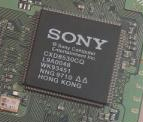First post, by 0101000000110101
- Rank
- Newbie
Hello everyone! I have been a huge enthusiast of the Playstation 1 for as long as I can remember, I grew up with it and have always been fascinated by its jittery, pixely 3D graphics capabilities.
So with this, I would like to find an IA-32 PC that is nearest in performance if not equal to the 33.33Mhz MIPS R3000 that the Playstation 1 used, for 3D graphics creation and game development. I would like to use an actual MIPS R3000, but those systems are incredibly difficult to find, and I doubt the animation software I use is compatible with it.
My research suggests that even the 286 is a bit faster than the R3000 by transistor count, but the 286 has the clock speed disadvantage and 16-bit processing limitations.
With that, I'm thinking that a 25Mhz 386 may be nearest to the R3000 33.33Mhz? I question looking into the SX variants, which has a 16-bit data bus, which in reduced performance may be closer to the CPU I'm trying to match.
I would like your guy's input on this, tell me what you think would match this CPU, and if you have the resources, perhaps benchmark an R3000.
Sources:
https://en.wikipedia.org/wiki/R3000
http://www.cpu-world.com/CPUs/R3000/
The end goal is to influence my purchasing decisions on an IA-32 PC that is most like a PS1.
What would even be more amazing is if I freaking studied all the right programming languages and computer engineering, I could attempt to modify a PS1 and install DOS on one.
1995 Gateway 2000 P5-120
Intel Pentium P5 120Mhz
16MB EDO RAM
1MB Trident 3D capable GPU
250GB Western Digital IDE drive
OS(s): Windows 98/Windows 2000 SP1
